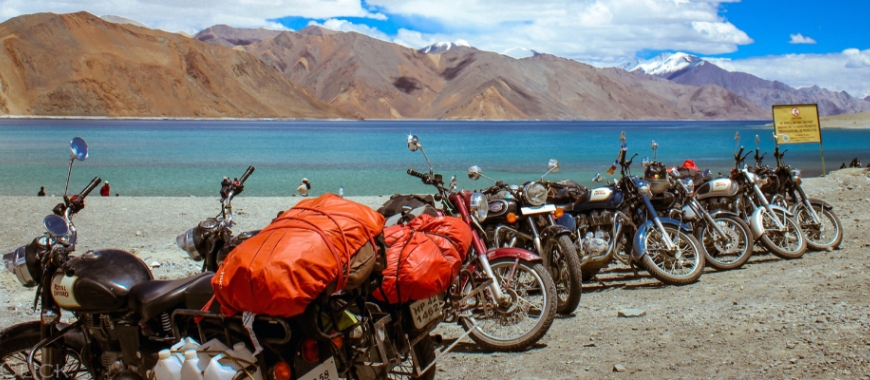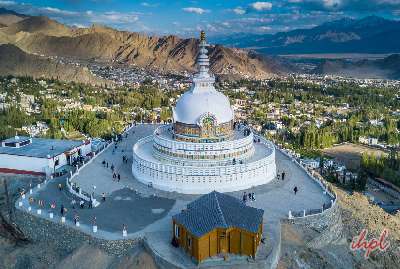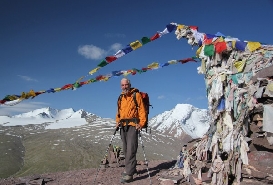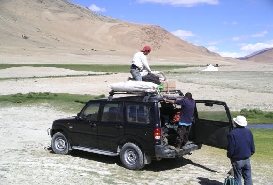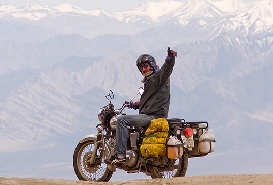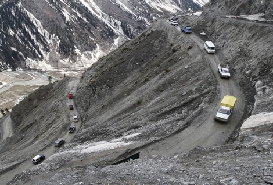Ladakh is a highly sought-after destination by tourists in India. Apart from its fabulous landscape and rugged topography, which is charming in a unique way, it is renowned for its monasteries. Also famously known as the ‘Cold Desert,’ it shares an international boundary with Tibet. Therefore, the civilization, lifestyle, and traditions of Leh Ladakh is heavily influenced by Tibetan culture.
However, due to its extreme climatic conditions, tourists must exercise certain precautions on their Leh Ladakh tour. These precautions ensure that you remain safe and sound while enjoying every part of the journey. To know about the travel tips for Ladakh, continue reading below.
Check out Leh Ladakh tour packages, Lamayuru tour packages
18 Essential Travel Tips for Leh Ladakh
While planning a trip to Ladakh, keep these Ladakh trip tips in mind, due to Ladakh’s extreme climatic conditions:
Leh Ladakh Temperature:
It should be known that Ladakh is a land of contrasts. The altitudes at Ladakh range from 9,000 ft at Kargil to 25,170 ft at Saser Kangri, at the Karakoram Range. While summers are quite comforting, winters are very tough and harsh. The months between December to February experienced subzero temperatures. However, compared to the lower altitudes, the sun’s intensity is felt strongly here due to the thin air.
Permit & Passport:
Tourists do not require any permit to travel to Leh. However, all international tourists and foreigners are required to complete their registration, particularly those traveling by road. The registration process can be completed at Drass, Rumtse, and Sarchu. Similarly, all tourists traveling by air should get their registration completed at the airport.
Visits to restricted areas, including Tso Moriri, Tso Kar, Pangong Tso Lake, Dhahanu, and Nubra Valley, require tourists to obtain a Protect Area Permit. These permits can be issued through registered travel agencies. One should always carry six copies of the permit as these are required for the purposes of verification at various checking points. If you follow the above tips for ladakh trip, you won’t face any legal issues during your Holiday in ladakh.
Check out Yurutse tour packages, Kargil tour packages, Ladakh tour packages with Taj Mahal
Altitude Sickness:
Acute Mountain Sickness, or AMS, is one of the major difficulties encountered by those on the Leh Ladakh trip. It is caused due to the lower percentage of oxygen at higher altitudes and is manifested by one or more of the following symptoms – fatigue, headache, dizziness, loss of breath, vomiting, rapid heart rate, and loss of appetite.
However, by observing certain rules and precautions, one can avoid facing this problem. Resting for a day or two after every climb of 2000 ft above 8000 ft altitude is one way. Also, make sure you carry oxygen cylinders and medicines on trip to Leh Ladakh.
Which medicines to carry:
A trip to Ladakh brings you face to face with unexpected situations and encounters. Therefore, one should always carry medicines in order to deal with all basic medical conditions like stomach ache, headache, and fever. Further, because AMS, or altitude mountain sickness, is quite common here, it’s advisable to carry enough stock of medicines like Diamox, Dexamethasone, Aspirin, or Disprin.
Leh Ladakh Hospitals / Clinics:
SNM hospital is the main hospital in Leh and is perfectly equipped for dealing with emergencies of any kind. Sub-district hospitals at district headquarters and medical dispensaries in major villages can be found in other parts of the region. These are attended to by well-qualified doctors. Besides these, private clinics are also available in Leh. In case of any emergencies, tourists can visit the Army’s General Hospital. Plenty of chemists’ shops is also available in close proximity to the SNM hospital, besides a few in the main market.
Police Stations in Ladakh:
If you face any kind of emergency or unexpected circumstances, you can contact the police station in Leh. Nubra Police Station in Nubra Valley and Nyoma Police Station in Nyoma are two other police stations that one can contact in case of any difficulties.
Phone / Internet Services:
The only mobile network which works in Ladakh is a postpaid BSNL mobile connection. Tourists can get this connection from any mobile shop. In Leh and the areas surrounding it, there is full connectivity. However, the mobile network will begin disappearing as soon as you begin descending on the other side of Rohtang Pass. As far as the Srinagar Leh highway is concerned, your connectivity will disappear completely after leaving Srinagar and remain like that to Leh.
It’s therefore advised to keep a copy of your emergency numbers with each person on your team. If you happen to be traveling with family, make sure that every person’s family has the contact number of at least one other person if an emergency arises.
Explore 4 day trip to Leh Ladakh, 4 Nights 5 Days Ladakh tour package, 4 days Ladakh honeymoon package
Bank / ATM Facilities in Leh Ladakh:
When in Ladakh, it’s preferable to keep an adequate supply of cash with you at all times. This is because the last ATM which you will come across on the Manali-Leh highway is in Manali. At Tandi, should the need to refuel arise, you will have to depend on cash as credit cards are not expected. However, several ATMs in the Leh market belong to different banks, including SBI, J&K Bank, and PNB. Moreover, in an area such as Nubra, Pangong, and Tso Moriri, the restaurants, hotels, and locals accept cash only.
Stays and Food:
Most of the hotels found in Leh Ladakh are family-run establishments that offer personalized services. This region is also home to a number of luxury hotels, including Hotel Charu Palace Leh and Grand Dragon. Deluxe hotels that offer comfortable and luxurious stays are Hotel Shangrila and Spik n Span. The standard hotels include Hotel Asia and Hotel Dreamland, among others.
There is no better way of getting acquainted with the people of Ladakh and their amazing hospitality than opting for a homestay. Some of the best homestays in Leh Ladakh are Gangba Homestay, Gangs Shun Homestay, Ladakh View Homestay, and Tukchu Homestay, among others.
Clothing:
During the summer months, which last from mid-June to September, this region experiences friendly weather where single T-shirts or shirts are sufficient. However, during the winters, which last from November to February, it’s mandatory to be dressed in heavy woolen clothes and warm jackets. The weather in Ladakh is unpredictable, so visitors should carry warm clothes while on a Ladakh trip. It is one of the valuable Ladakh travel tips, that lets you enjoy vacation comfortably.
Intra-City Transport:
In Ladakh, there are a lot of buses and private vehicles available for the purposes of intra-city transportation. Buses are available from Leh City to the major places of Ladakh. However, the bus services are quite irregular due to unpredictable weather conditions. Leh offers an impressive range of transportation facilities with more than 2000 vehicles. Taxis, Innova, Mahindra Scorpio, Xylo, Toyota, and Tata Grande, besides other vehicles, are also available here.
Road Conditions:
The whole of the Himalayan region experiences heavy snowfall during the winters. This often leads to delays in the opening of the roads. Moreover, during this time, the roads are in bad condition, and the occurrence of landslides and roadblocks is quite normal. Due to the rough terrain here, roads are damaged and rebuilt yearly. Apart from these factors, the roads are perfectly maintained by the BRO.
Keep Identity proofs:
During the entire course of the journey, one should always keep multiple copies of one’s driving license, PUC, insurance, PAN and vehicle registration papers with oneself at all times. This makes it easier to go through military checkpoints at all times. However, if you are planning to travel to Pangong Tso or the other interior parts of the state, be prepared to submit various copies of your identity roofs at various checkpoints.
Extra Arrangements:
While going on a trip to Leh Ladakh, one should always keep certain gadgets like a high-definition camera which will capture some beautiful memories of your wonderful trip. Therefore, it’s essential to carry extra supplies with you when out are on the road. Other gadgets that one should always carry with oneself at all times are gadget chargers, power banks, and car chargers.
Browse through our Ladakh tour package from Manali
Languages Spoken:
Boti is the main language spoken in the Ladakh region. The other languages spoken in this region are Balti, Brokshat, Changshat and Shina. English and Hindi are common in schools, offices, and restaurants.
Popular Attractions:
Some popular attractions of Leh Ladakh are Pangong Lake, Tso Moriri Lake, Zanskar Valley, Khardung La Pass, Nubra Valley, Hemis National Park, Pathar Sahib, Nubra Valley, Tso Moriri Lake, Hemis Monastery and Village, Shanti Stupa, etc.
Popular Activities:
Ladakh is a haven for those seeking adventure. One can go for some adventure activities like mountaineering, trekking, and white water rafting. Besides, traditional sports like archery, polo, and camel safari are common in the countryside.
Best Season:
The best time to travel to Ladakh is during the summers, starting from May and continuing till September. However, most tourists plan their trips in winter because this is when most Ladakhi festivals take place.
Conclusion
Here we have covered everything you need to know to plan a trip to Ladakh, I hope it’ll help you. It will be a memorable vacation if you follow our Leh ladakh tips.

